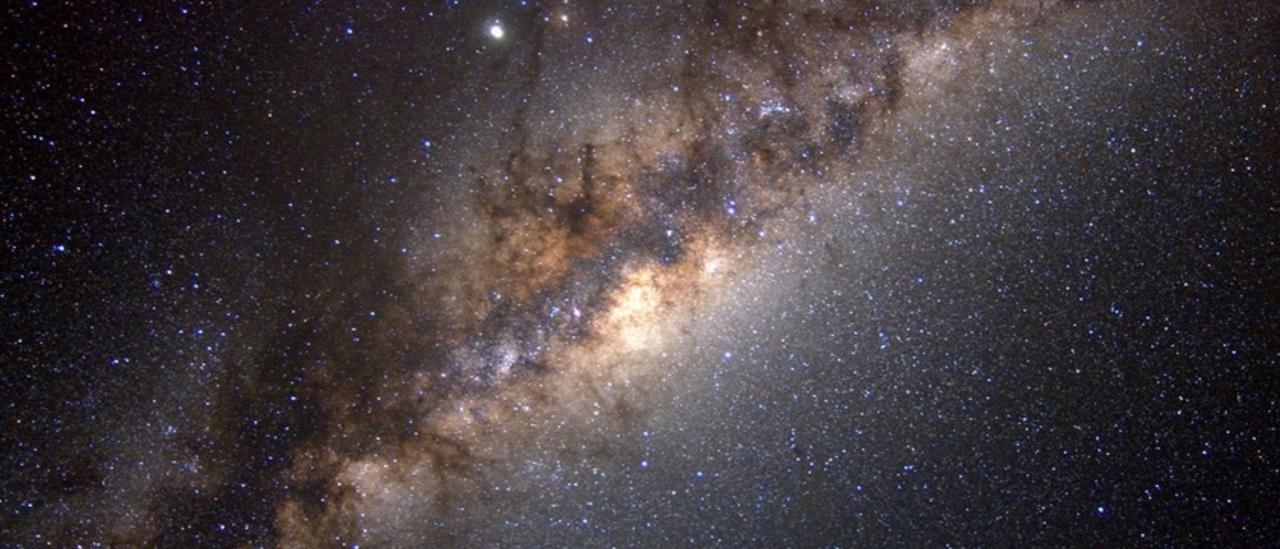General data
This line of research focuses on the study of Local Group galaxies, including the Milky Way, through resolved stars and nebulae. This field is at the center of important breakthroughs thanks to projects such as the Gaia mission, large followup spectroscopic surveys (e.g. WEAVE, SDSS, 4MOST, IACOB, DESI) and other players such as TESS, PLATO and LSST.
Specific goals 2020 - 2024:
- To study the morphology, structure, chemistry, kinematics, dynamics and assembly history of the different Milky Way components using cutting-edge datasets and interpret these properties through modelling and cosmological hydrodynamical simulations.
- To derive time resolved star formation histories of the different components (thin and thick disk, bulge and halo) of the Milky Way, the Magellanic Clouds and other Local Group galaxies using Gaia, ground based wide field imaging and HST data, and study the stellar populations of the central Galaxy using EMIR and MIRADAS.
- To study the internal kinematics and chemistry of dwarf galaxies, and determine their dark matter halo properties, by exploiting Gaia and forthcoming spectroscopic surveys data.
- To study the multiple stellar populations phenomenon in globular clusters using colour magnitude diagrams for objects in the Milky Way and its satellites, and high resolution integrated spectroscopy in distant galaxies.
- To use Local Group galaxies as a stepping stone to study the distant and early Universe up to the epoch of reionization.
- To pave the road for the study of resolved stellar populations beyond the Local Group with ELT/HARMONI.
- To develop semi-empirical spectral libraries, stellar evolution model libraries and population synthesis tools, and validate methodologies using local stars, HII regions, planetary nebulae and nearby stellar systems.
Severo Ochoa Members
Coordinator
Research Lines Scientific Representative of the Severo Ochoa Programme at the IAC

César
Esteban López
PROF.UN.ULL
Research Lines Scientific Representative of the Severo Ochoa Programme at the IAC

Carmen
Gallart Gallart
PROFESOR/A INVESTIGACIÓN OPIS
Staff
Advanced Fellow

Matteo
Monelli
INVESTIGADOR AFILIADO
Postdoc
Guillaume Frederic Jean Claude
Thomas
INVESTIGADOR/A POSTDOCTORAL
PhD Students
Elena
Arjona Gálvez
PredocFPISO-20
PhD Students
Jose María
Arroyo Polonio
PredocFPISO-21
Main scientific outputs
Scientific outputs 2020-2024:
- The recurrent impact of the Sagittarius dwarf on the Milky Way star formation history. Using Gaia DR2 data, the star formation history (SFH) of a bubble of 2 kpc radius around the Sun was obtained. This SFH presents conspicuous star forming events around 5.7, 2 and 1 Gyr ago, coinciding with inferred pericentric passages of the Sagittarius dwarf galaxy which, therefore, emerges as an important actor in the build-up of the Milky Way disc. Ruiz-Lara et al. 2020, NatAs, 4, 965-973
- Internal rotation of Milky Way dwarf spheroidal satellites with Gaia Early Data Release 3. Making use of data from Gaia EDR3 and line-of-sight velocities from the literature, we studied the internal kinematics of six dwarf spheroidal satellites of the Milky Way. We found significant rotation in the plane of the sky for Carina, Fornax, and Sculptor. These are the first measurements of rotation in the plane for the classical satellites of the MW. Rotation in the plane of the sky does not seem to play a key role in the 3d shape of these galaxies. The rotation velocities and the current distance of the satellites to the MW suggest that either tidal stirring had a weak effect in these systems or they suffered a consistent tidal transformation.
- Systemic proper motions of galaxies in the Local Group. Using astrometry and photometry from Gaia's Early Data Release 3, we determined the systemic proper motions of the largest sample of Local Group galaxies to date out to an impressively large dista nce of about 1.4 Mpc. The results have had an impact on several aspects of the properties of the Milky Way neighbouring galaxies, among which their interactions with the Milky Way and the origin of some of them as satellites of the Large Magellanic Cloud. Battaglia et al. (2022), A&A, 657, 54. ESA Gaia Image of the week.
- Solving the enigma of the brightest planetary nebulae. The brightest PNe in any stellar system reach a maximum, almost invariant, [OIII]5007 luminosity. Theory cannot explain it in old systems, such as bulges or ellipticals if, as expected, they originate from M>2 Msun progenitors because such stars should not be there anymore. However, deep GTC spectra of bright PNe in M31 show that progenitors of the brightest PNe were, in all cases studied, 1.5 Msun stars that now excite normal, high density nebulae. Recent modelling using updated evolutionary tracks shows that these PNe can indeed reach the cut-off value of m(5007)=-4.54 mag for a short period of time around 1000 years. This sets the scene for finally solving, we believe, this 30 yr-old enigma. Galera-Rosillo et al. 2022 A&A 657,71.
- A stellar stream remnant of a globular cluster below the metallicity floor. Combining Gaia eDR3 astrometric data with photometric metallicities of the Pristine survey, we present the discovery of the C-19 stellar stream (Martin et al. 2022, Nature), the most metal-poor stellar system ever known in our Galaxy, with a metallicity of [Fe/H] = -3.6, well below any other known structure in the Galaxy, with a low metallicity dispersion and heavy element abundances measured using follow-up observations with the Gemini North Telescope in Hawaii and Gran Telescopio Canarias in La Palma. Martin et al. 2022, Nature, 601, 45







